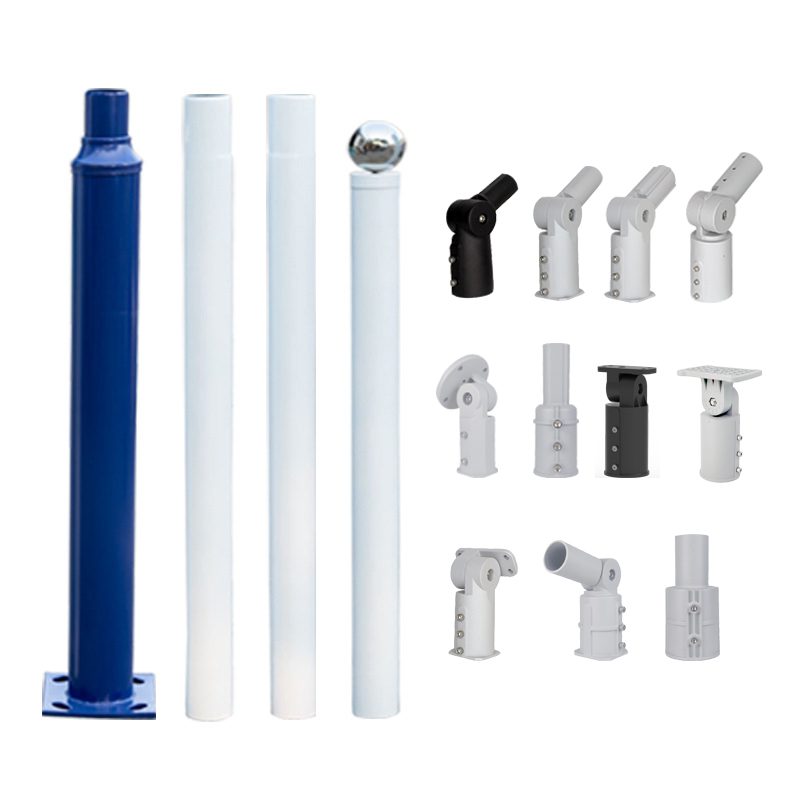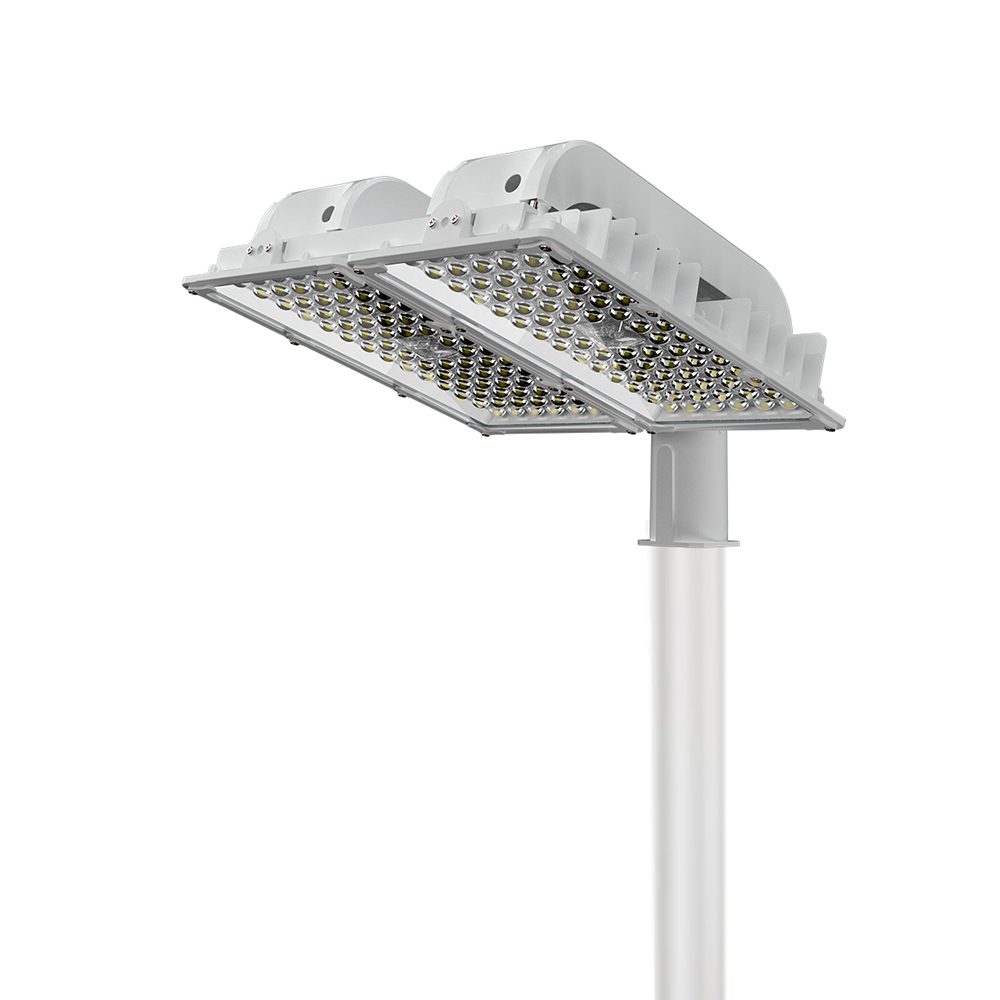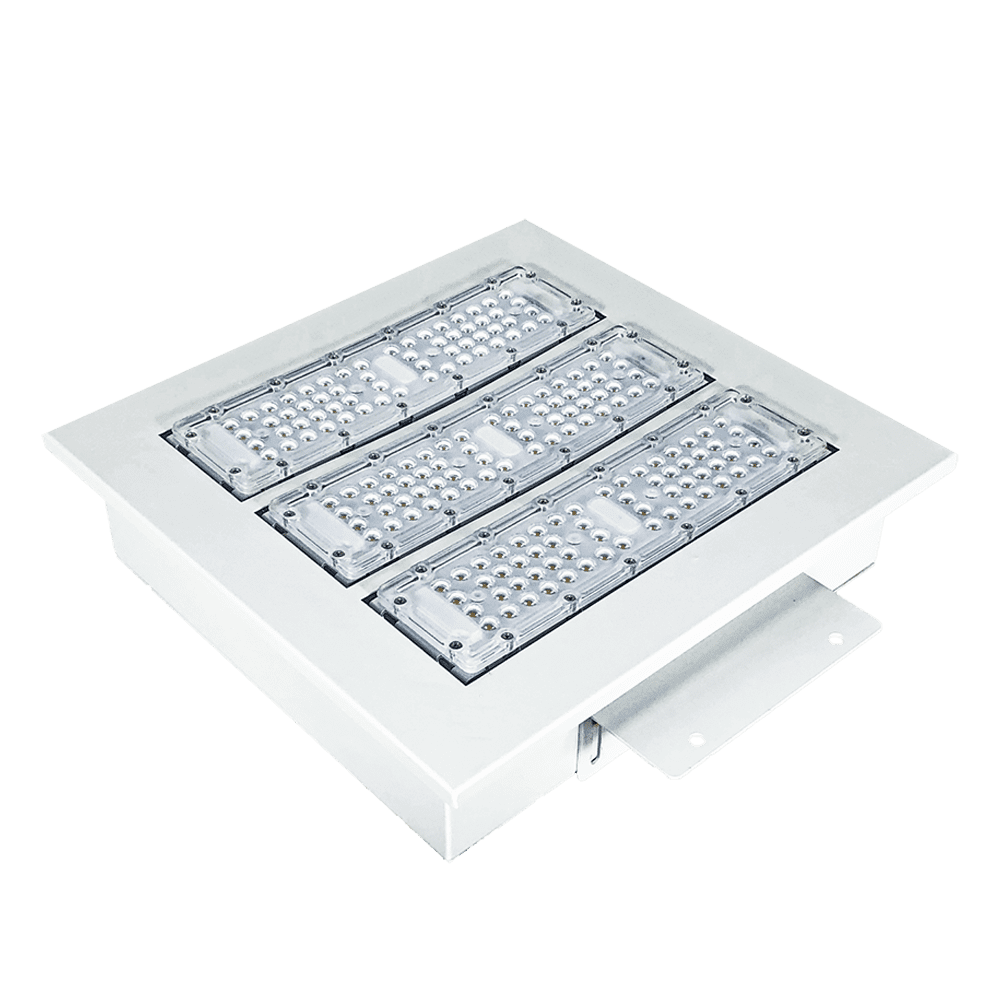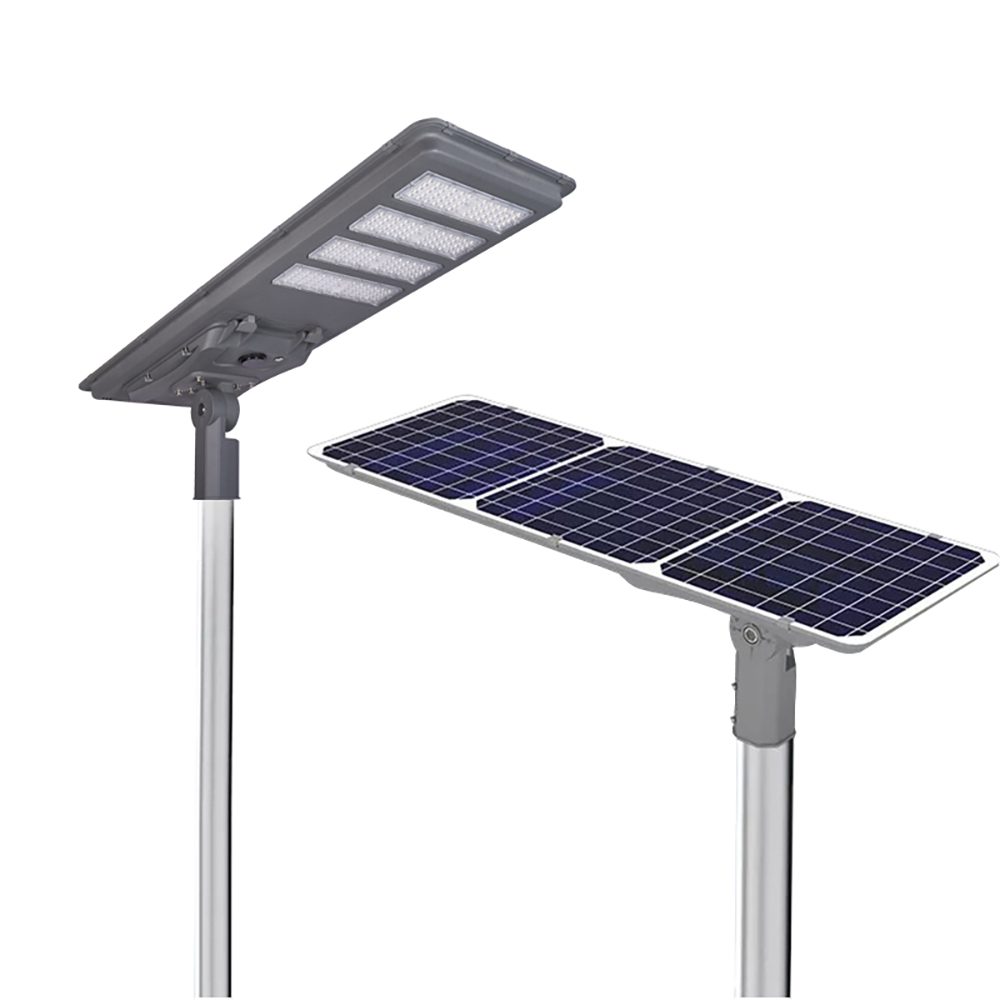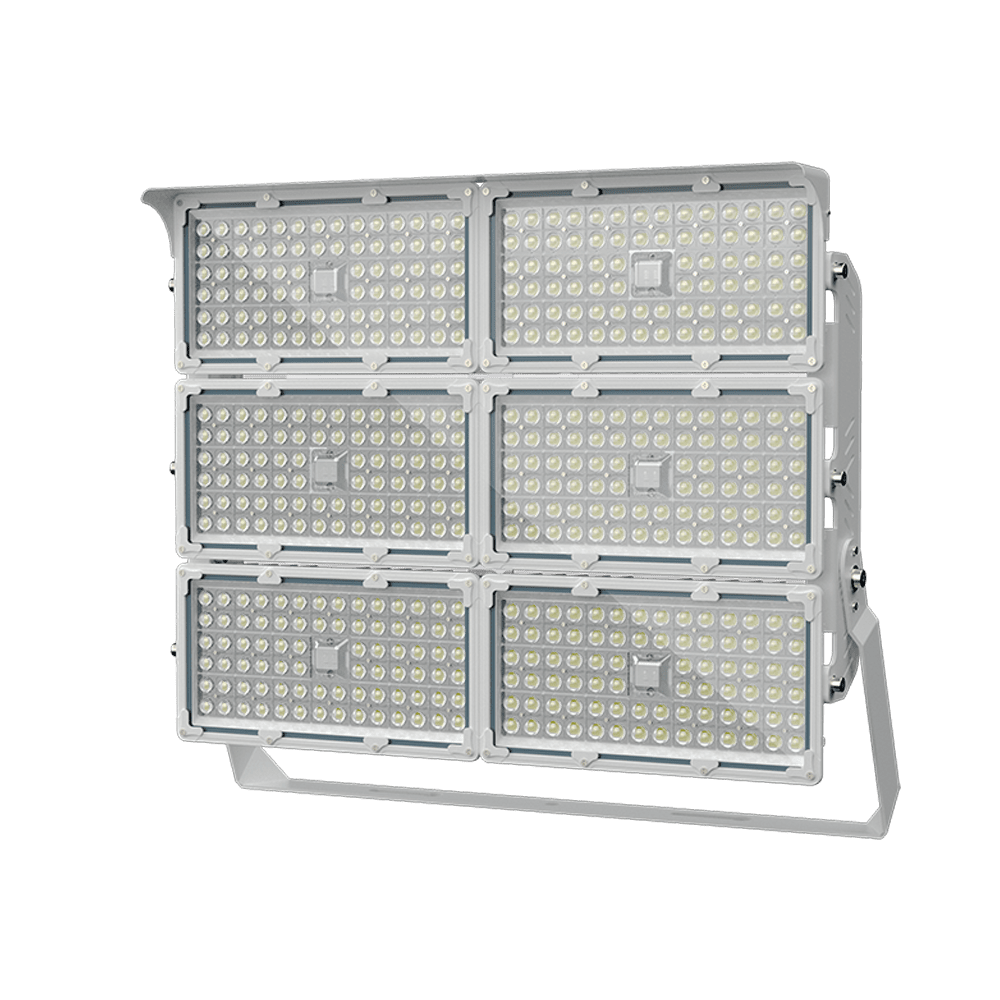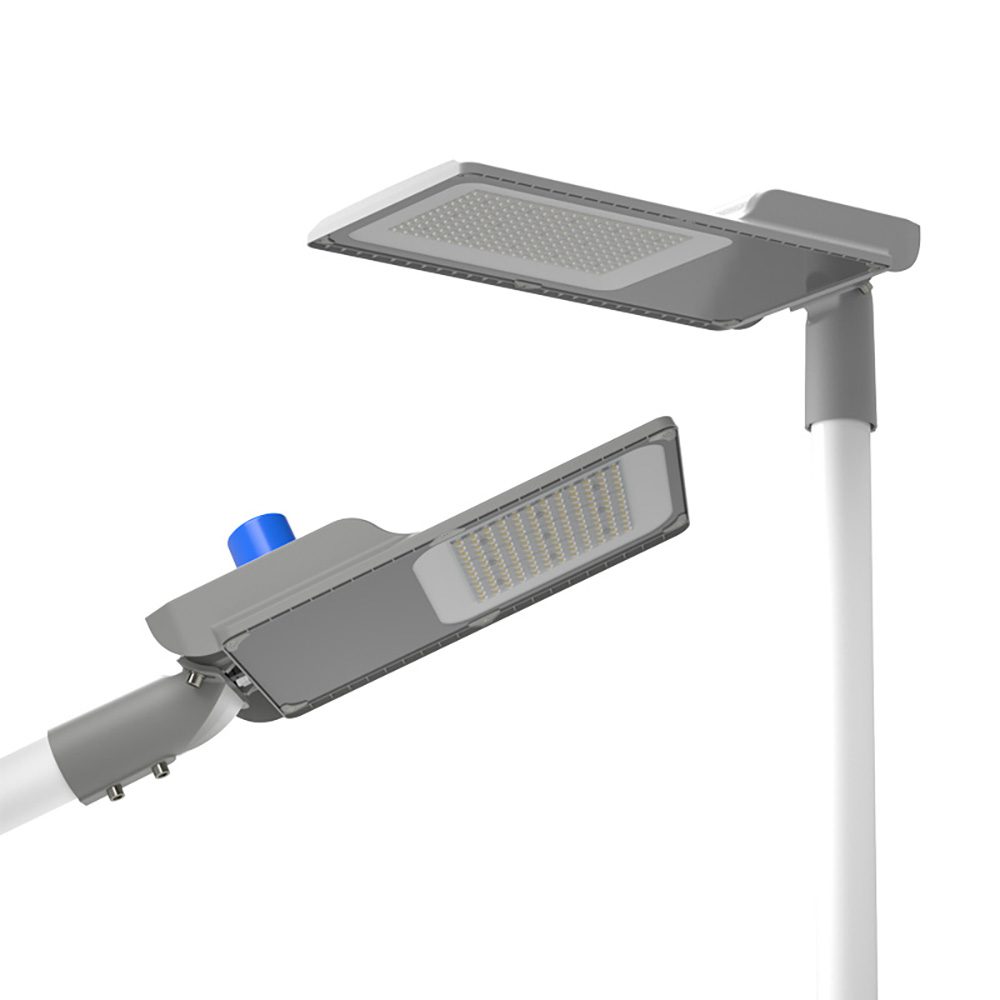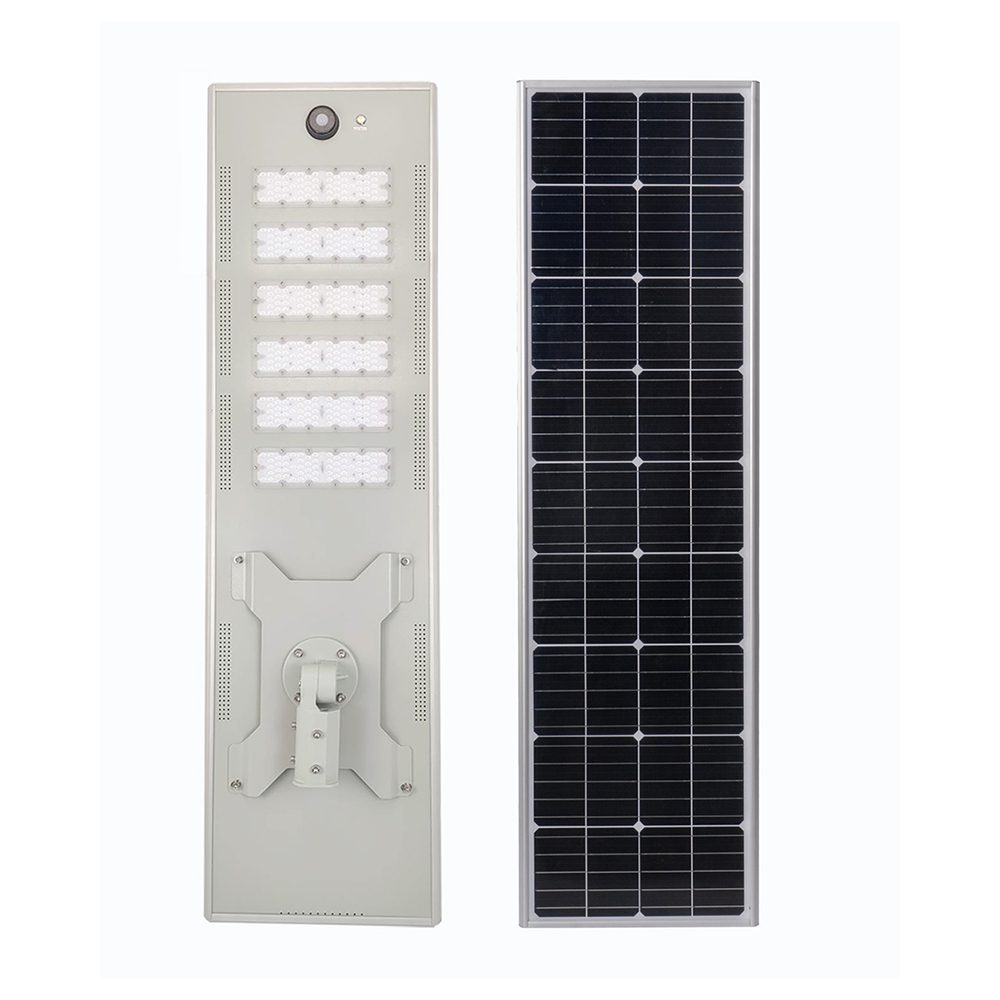When constructing or renovating a football field, an effective lighting design is crucial for ensuring the quality of matches and enhancing the spectator experience. Here are the key steps and considerations for determining the number of lighting fixtures needed.
1.Establish Lighting Standards
Begin by determining the appropriate lighting standards based on the level of play and intended use. Common lighting requirements include:
Amateur Matches: 200-300 lux
Professional Matches: 300-500 lux
Televised Events: 500 lux and above
Selecting the right lighting standard is essential for calculating the required number of fixtures.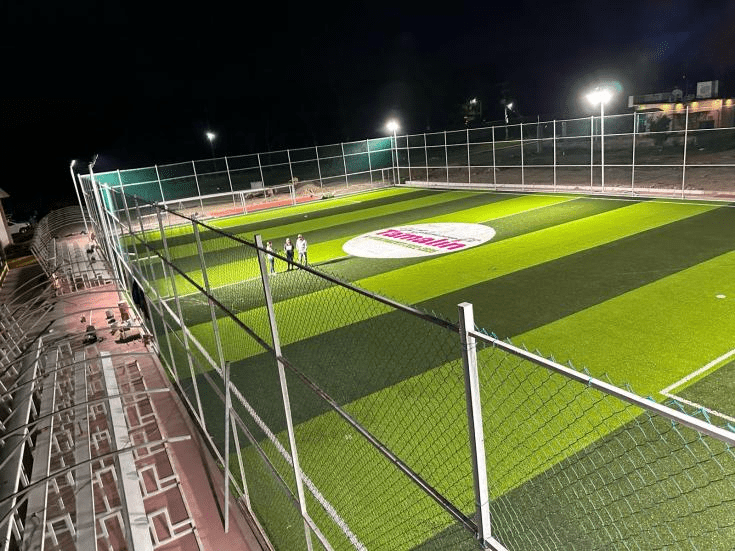
2.Calculate the Field Area
The standard dimensions for a football field are approximately 105 meters by 68 meters, resulting in a total area of about 7,140 square meters. Accurately measuring the field area is crucial for calculating the number of lighting fixtures needed.
3.Calculate Required Luminous Flux
Using the selected lighting standard and field area, you can calculate the total luminous flux (lumens) required:
Total Luminous Flux=Field Area×Lighting Standard
For example, if the lighting standard is 300 lux:
7,140m²×300lux=2,142,000lumens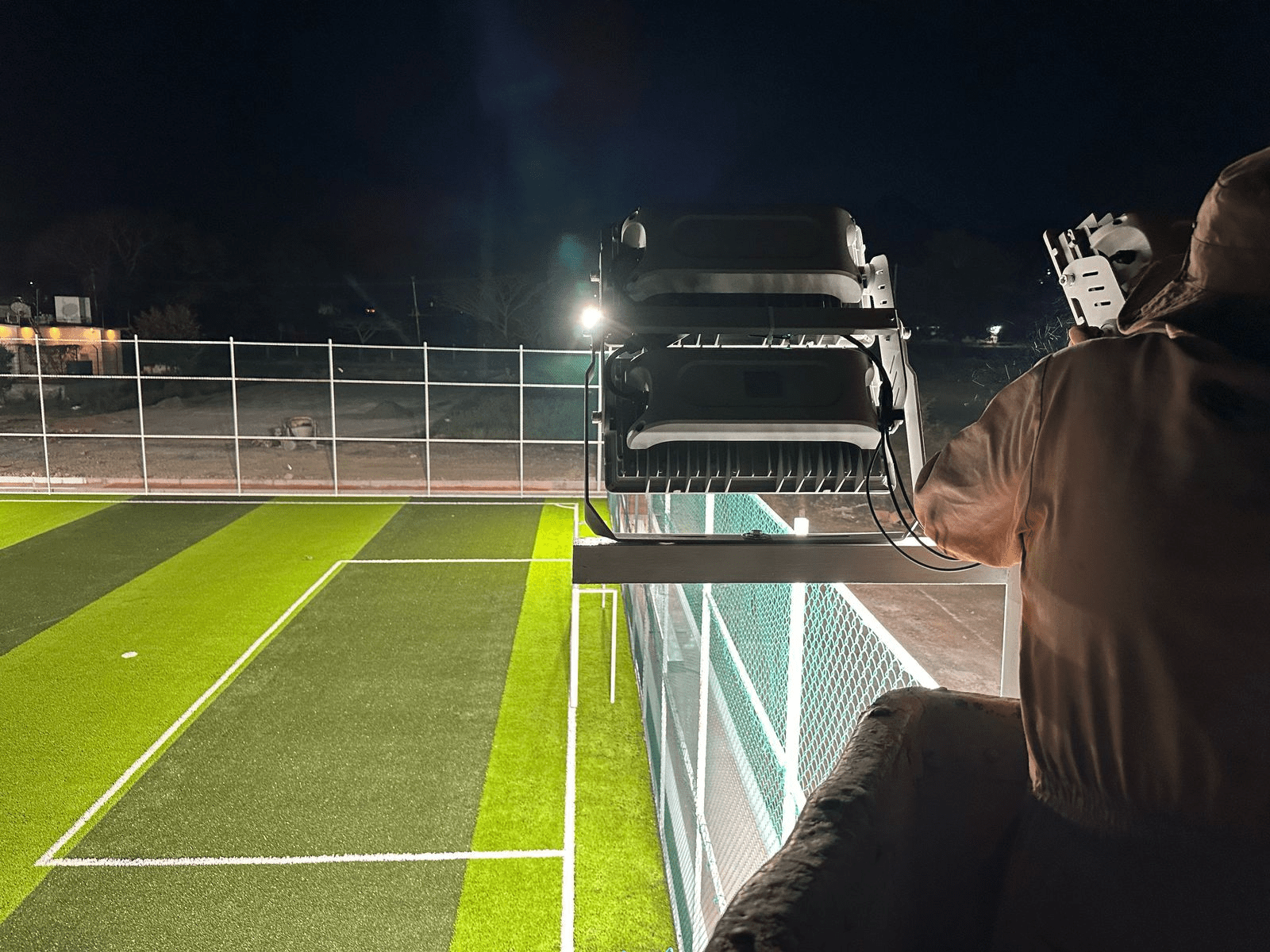
4.Determine Fixture Luminous Flux
Select appropriate types of fixtures (such as LED or metal halide lights) and understand their luminous flux. For instance, common LED fixtures may provide between 20,000 and 30,000 lumens each.
5.Calculate the Number of Fixtures Needed
Based on the total luminous flux required and the luminous flux per fixture, you can determine the number of fixtures necessary:
Number of Fixtures=Total Luminous Flux/Luminous Flux per Fixture
Assuming each fixture provides 30,000 lumens:
2,142,000lumens/30,000lumens/fixture≈71.4
Thus, at least 72 fixtures would be needed.
6.Consider Fixture Layout
The layout of the fixtures is critical for ensuring even light distribution and minimizing shadows. It is generally recommended to distribute fixtures evenly around the field while considering the height and angle of the lights.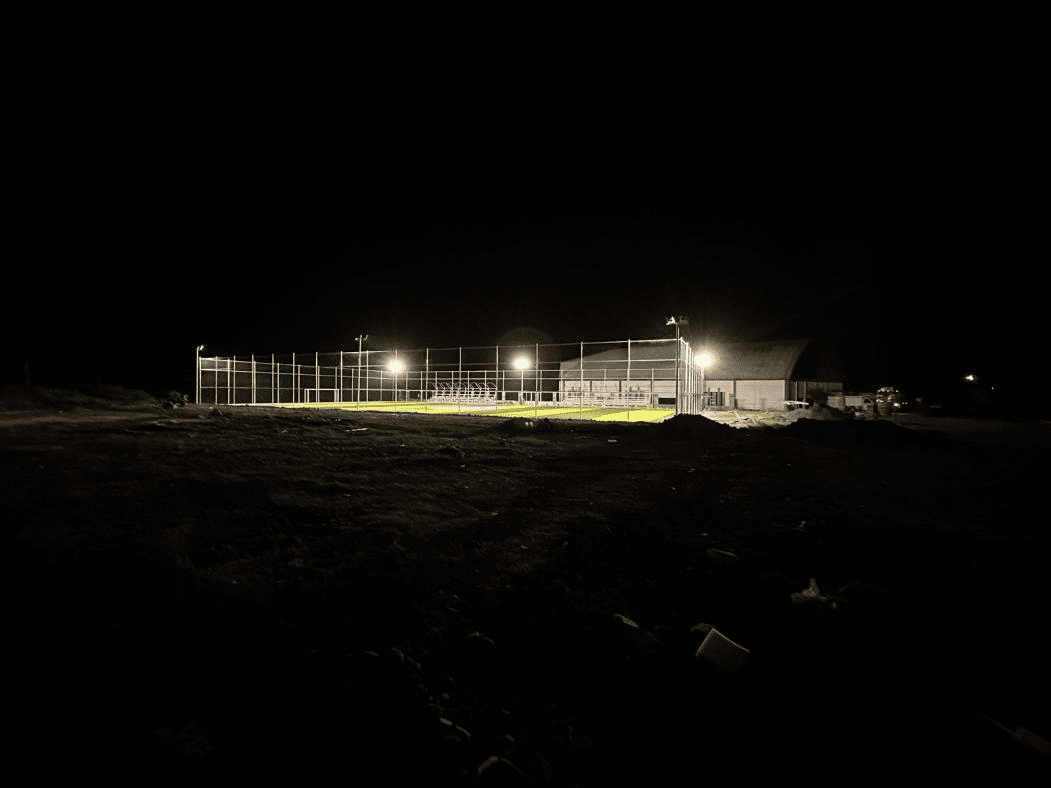
7.Ensure Lighting Uniformity
Achieving uniform lighting across the field is another important aspect of design. The recommended uniformity ratio is typically between 0.5 and 0.7, meaning the ratio of the highest to lowest illumination levels on the field should be maintained within this range.
8.Conduct Lighting Simulations
Before installation, using lighting design software to simulate different fixture configurations can help assess light distribution and optimize the design.
An effective lighting design for a football field involves multiple factors, and accurately calculating the number of fixtures needed is key. By considering lighting standards, field area, fixture luminous flux, and uniformity requirements, you can effectively determine the necessary fixtures and layout. Consulting with a professional lighting designer during the planning stage is recommended to ensure the best results.

